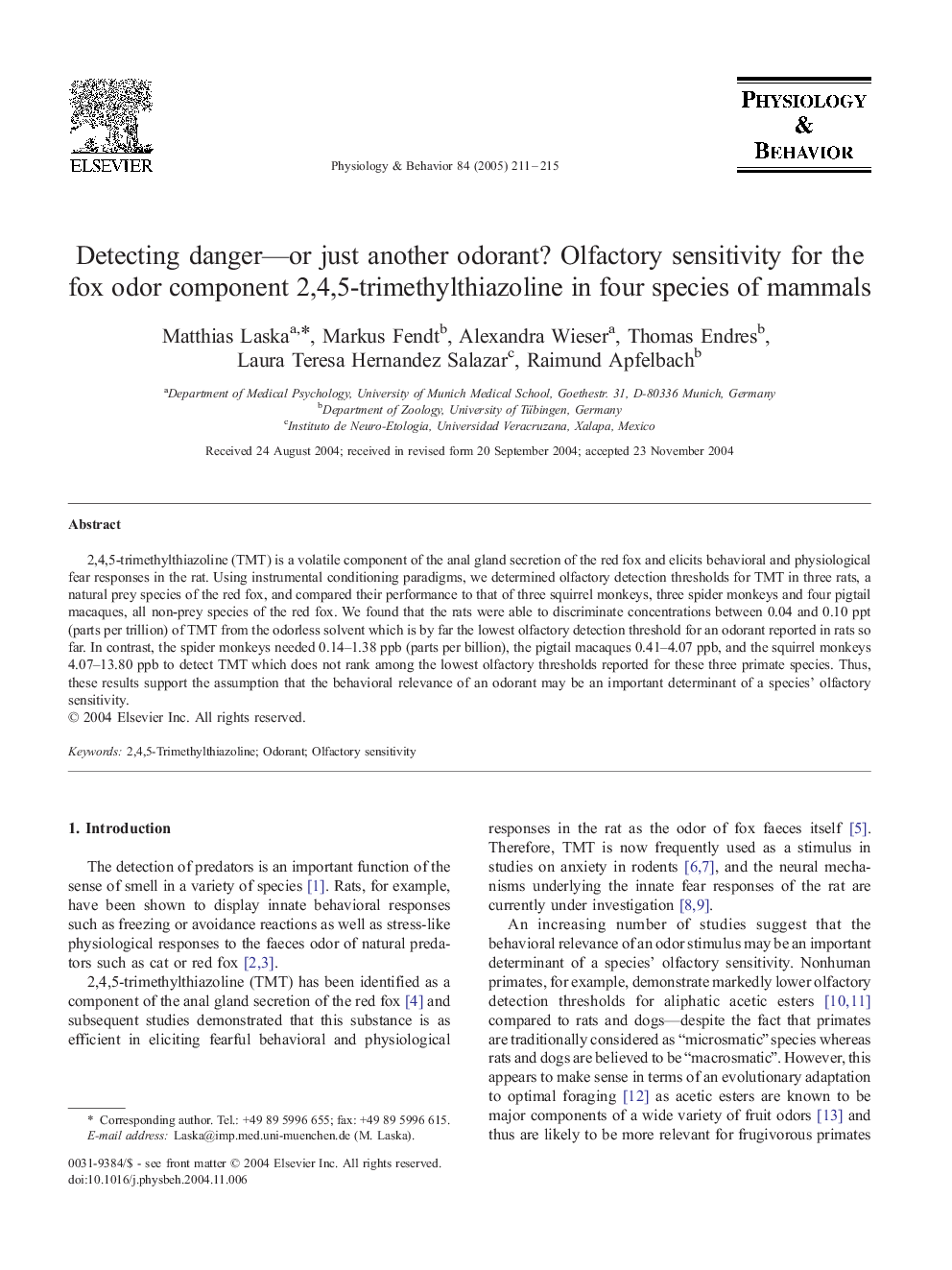| Article ID | Journal | Published Year | Pages | File Type |
|---|---|---|---|---|
| 9149561 | Physiology & Behavior | 2005 | 5 Pages |
Abstract
2,4,5-trimethylthiazoline (TMT) is a volatile component of the anal gland secretion of the red fox and elicits behavioral and physiological fear responses in the rat. Using instrumental conditioning paradigms, we determined olfactory detection thresholds for TMT in three rats, a natural prey species of the red fox, and compared their performance to that of three squirrel monkeys, three spider monkeys and four pigtail macaques, all non-prey species of the red fox. We found that the rats were able to discriminate concentrations between 0.04 and 0.10 ppt (parts per trillion) of TMT from the odorless solvent which is by far the lowest olfactory detection threshold for an odorant reported in rats so far. In contrast, the spider monkeys needed 0.14-1.38 ppb (parts per billion), the pigtail macaques 0.41-4.07 ppb, and the squirrel monkeys 4.07-13.80 ppb to detect TMT which does not rank among the lowest olfactory thresholds reported for these three primate species. Thus, these results support the assumption that the behavioral relevance of an odorant may be an important determinant of a species' olfactory sensitivity.
Keywords
Related Topics
Life Sciences
Biochemistry, Genetics and Molecular Biology
Physiology
Authors
Matthias Laska, Markus Fendt, Alexandra Wieser, Thomas Endres, Laura Teresa Hernandez Salazar, Raimund Apfelbach,
